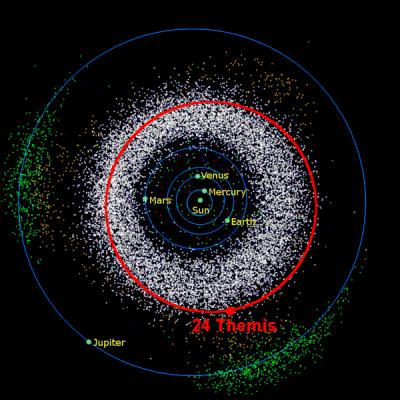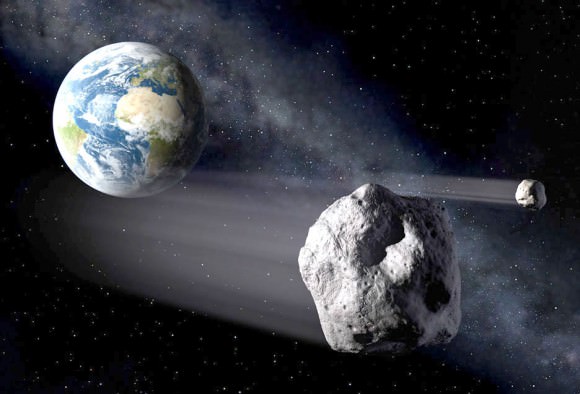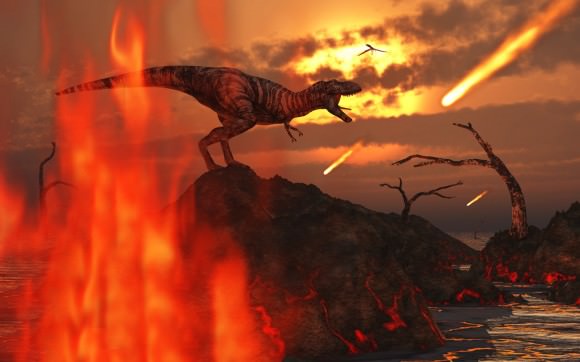At first glance, looking at a bunch of space rocks doesn’t sound that exciting. Like, aren’t they just a bunch of rubble? What use can they be in understanding the Solar System compared to looking at planets or moons?
Turns out that asteroids are key to figuring out how the Solar System came to be, and that they’re more interesting than they appear at first glance. Below, we have 10 facts about asteroids that will make you reconsider that biased first impression.
Asteroids are leftovers of the early Solar System.
The leading theory about how our neighborhood came to be is this: the Sun coalesced from a compressed grouping of gas that eventually began fusing atoms and creating a protostar. Meanwhile, the dust and debris nearby the Sun began to coalesce. Small grains became small rocks, which crashed into each other to form bigger ones. The survivors of this chaotic period are the planets and the moons that we see today … as well as a few smaller bodies. By studying asteroids, for example, we get a sense of what the Solar System used to look like billions of years ago.

Most asteroids are in a “belt”.
While there are asteroids all over the Solar System, there’s a huge collection of them between the orbits of Mars and Jupiter. Some astronomers think that could have formed into a planet if Jupiter was not nearby. By the way, this “belt” may erroneously create the impression that it is chock full of asteroids and require some fancy Millennium Falcon-style maneuvering, but in reality there are usually hundreds or thousands of miles in between individual asteroids. This shows the Solar System is a big place.
Asteroids are made of different things.
In general, an asteroid’s composition is determined by how close it is to the Sun. Our nearby star’s pressure and heat tends to melt ice that is close by and to blow out elements that are lighter. There are many kinds of asteroids, but these are the three main types, according to NASA:
- Dark C (carbonaceous) asteroids, which make up most asteroids and are in the outer belt. They’re believed to be close to the Sun’s composition, with little hydrogen or helium or other “volatile” elements.
- Bright S (silicaceous) asteroids and are in the inner belt. They tend to be metallic iron with some silicates of iron and magnesium.
- Bright M (metallic) asteroids. They sit in the middle of the asteroid belt and are mostly made up of metallic iron.

Asteroids also lurk near planets.
NASA also has classifications for this asteroid type. Trojans stay in the same orbit as a planet, but they “hover” in a special spot known as a Lagrangian point that balances the pull of the planet’s gravity and the pull of the Sun. Trojans near Mars, Jupiter and Neptune have been discovered — as well as at least one near Earth in 2011. We also have near-Earth asteroids, which cross our orbit and could (statistically speaking) one day pose a threat to our planet. That said, no one has yet identified any one asteroid that will one day collide with our planet for sure.
Asteroids have moons.
While we think of moons as something that orbits a planet, asteroids also have smaller bodies that orbit them! The first known one was Dactyl, which was discovered in 1993 to be orbiting a larger asteroid called Ida. More than 150 asteroids are known to have moons, with more being discovered periodically. A more recent example is one discovered orbiting Asteroid 2004 BL86, which passed 750,000 miles (1.2 million kilometers) from Earth in early 2015.

We have flown by, orbited and even landed on asteroids. NASA says there are more than 10 spacecraft that accomplished at least one of these, so we’ll just cover a couple of examples here. NEAR Shoemaker touched down and survived for weeks on 433 Eros in 2001 despite not being designed to do it. NASA’s Dawn spacecraft spent months orbiting Vesta — the second-largest member of the asteroid belt — in 2011 and 2012. And in 2010, Japan’s Hayabusa spacecraft made an astonishing return to Earth bearing samples of asteroid Itokawa that it nabbed in 2005.
Asteroids are too small to support life as we know it. That’s because they’re too tiny to even hold on to atmospheres. Their gravity is too weak to pull their shape into a circle, so they’re irregularly shaped. To get a sense of just how small they are in aggregate, NASA says the mass of all the asteroids in the Solar System is less than our Moon — which only has a tenuous “exosphere” itself.

Despite their small size, water may flow on asteroid surfaces. Observations of Vesta released in 2015 show gullies that may have been carved by water. The theory is that when a smaller asteroid slams into a bigger one, the small asteroid releases a layer of ice in the bigger asteroid it hit. The force of the impact briefly turned the ice into water, which streaked across the surface. (As for how the ice got there in the first place, it’s possible that comets deposited it in some way — but that’s still being investigated as well.)
An asteroid could have killed the dinosaurs. The fossil record for dinosaurs and other creatures of their era show them rapidly disappearing around 65 million or 66 million years ago. According to National Geographic, there are two hypotheses for this event: an asteroid or comet hitting the Earth, or a huge volcano eruption. The case for an asteroid comes from a layer of iridium (a rare element on Earth, but not in meteorites) that is found all over the world, and a crater called Chicxulub in Mexico’s Yucatan Peninsula that is about 65 million years old. Iridium, however, is also found inside the Earth, which lends credence to some theories that it was volcanoes instead. In either case, the resulting debris blocked the Sun and eventually starved those survivors of the impact.
At least one asteroid has rings. Called Chariklo, scientists made the surprise discovery in 2013 when they watched it pass in front of a star. The asteroid made the background star “blink” a few times, which led to the discovery that two rings are surrounding the asteroid.

